Your shopping cart is empty.
Bonsai styles
In nature, trees are forced into all kinds of shapes under the influences of weather, wind and placement. Consequently, bonsai trees can have many shapes and sizes and, depending on their way of growing, they are grouped into various styles and shapes.
Maybe some shapes seem strange and unnatural, but they are all based on the way trees grow in nature. Each tree, however, has its own character and within a certain style there is still an enormous variety. Usually a bonsai tree is given its name according to its shape or the number of trunks it has.

Bankan

Coiled style - This twisted style is probably the closest to what came from China; often called the ‘dragon style’ (or ‘green dragon’) it is a favorite in Chinese bonsai and is an auspicious presence in the garden. The mystical Chinese dragon symbolizes good fortune and prosperity and in this style the tree coils around itself like a Chinese dragon. The bark appears to twist and wind its way up the trunk, much like a snake coiling its way up a branch.
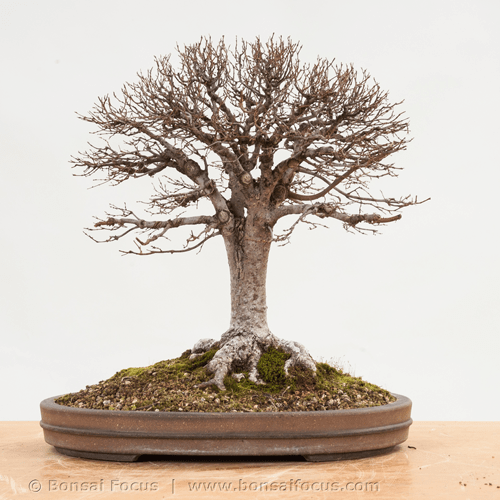
Hokidachi
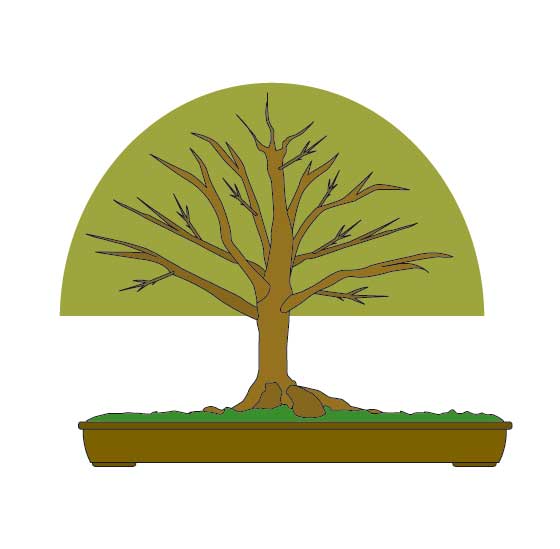
Broom style - Trees in this style have an upright trunk with branches and foliage radiating outwards in the shape of a Japanese fan or an umbrella.

Kengai

Cascade style - In nature, this tree grows on a rock face and, because of snow and wind, it first grows downwards and then upwards again. In Kengai the leaves grow lower than the pot.

Chokkan
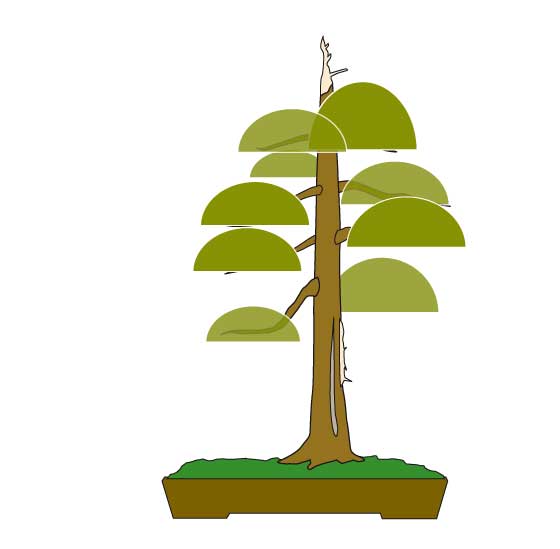
Formal upright style - The trunk is straight and tapers toward the top. The branches of the bonsai must gradually become shorter and thinner from the bottom to the top, be horizontal compared with the trunk, or bent slightly downwards. The roots at the base of the trunk are nicely spread. The whole composition must be in balance with the trunk and the pot.

Yose-ue
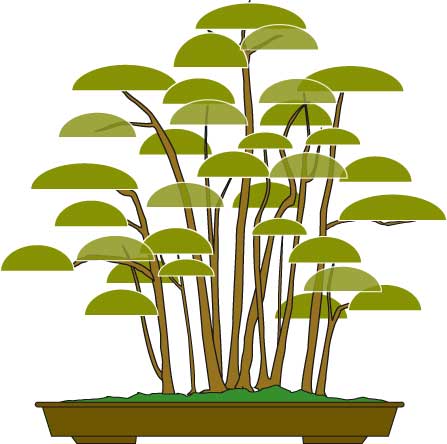
Forest/group style - We can see this as a small forest in a flat pot. It should create the illusion of a miniature version of a forest. The distances between the trees should be different. Do not place three or more trees on the same line. The trunks should vary in thickness and height. The number of trees in a smaller group cultivation should be uneven. Though if more than 15 trees are used, it is not so important to stick to uneven numbers. Satsuki are used to replicate a forest in bloom and if used for group cultivation, all trees should be of the same type.
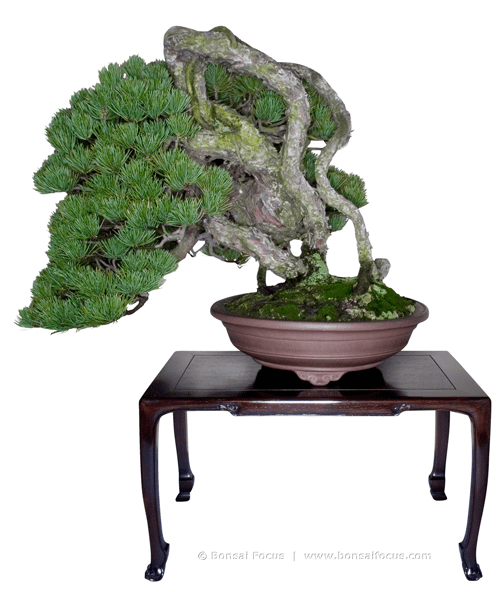
Neagari

Exposed-root style - The roots of the neagari emerge above the surface of the soil. These uncovered roots give the impression that the tree has been exposed to soil erosion for many years.

Sharimiki

Driftwood style - A tree where the trunk is mostly deadwood, more commonly seen on junipers and yews where the trunk is primarily deadwood with one or two live veins running up to the remaining branches. When accompanied with jins and shari this style presents a powerful and dramatic picture.
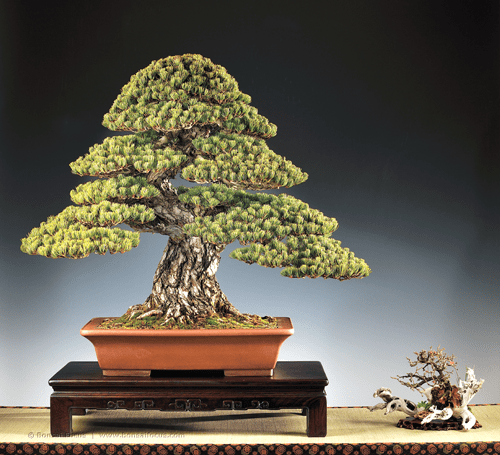
Moyogi

Informal upright style -The trunk is slightly bent and tapers toward the top. The top of the tree is straight above the base of the trunk. The branches are distributed asymmetrically. The lower branches must be placed at the outer side of the curves or bends.

Sabamiki

Split trunk style - Usually has the base of its trunk split or hollowed out. In nature this style is usually found in very old trees. In bonsai, Sabamiki can add a feeling of great age to the tree. Sabamiki can be used on both deciduous trees and conifers.

Bunjin-gi

Literati style - This strange style is characterized by a thin slender trunk with only a few branches. The lower branches are often dead and barren, but the trunk itself is full of great character. The style owes the name ‘literati’ to the paintings of old Chinese artists, who would reproduce a tree in an almost abstract way. It is characterized by elegance and grace.

Sankan-gi

Triple trunk style - This has three, five, or seven trunks of different trunk diameters growing from a single root ball. If there are three trunks of differing diameters, it is referred to as a father, mother, son arrangement. Slender trunk trees, such as maples and elms, are best suited to this style.

Seki-joju
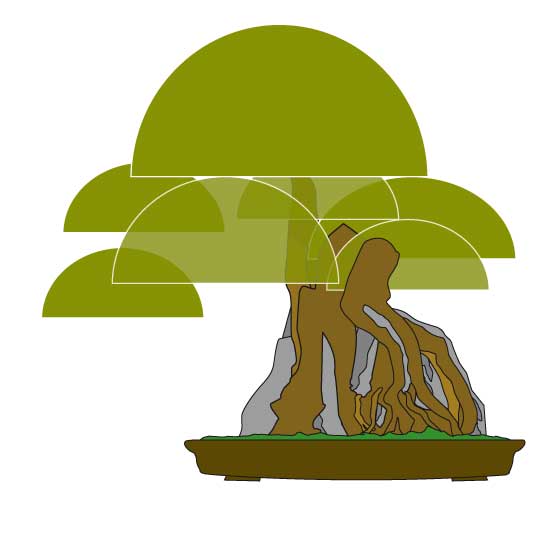
Root-over-rock style -A rock planting where the roots grow over the rock and disappear into the ground.
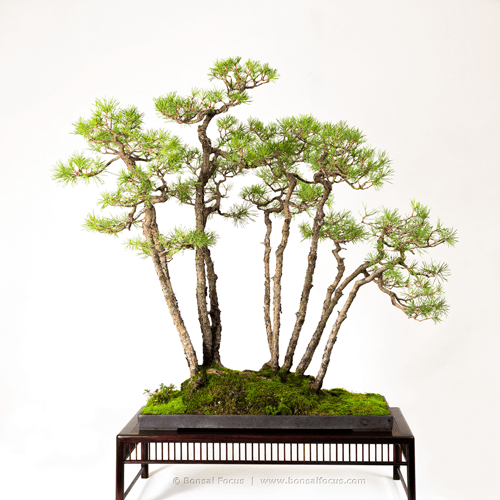
Ikadabuki

Raft style - This represents a fallen tree, with the trunk buried under the soil. The branches at the top of the fallen tree grow straight upwards as trunks.

Ishitsuki
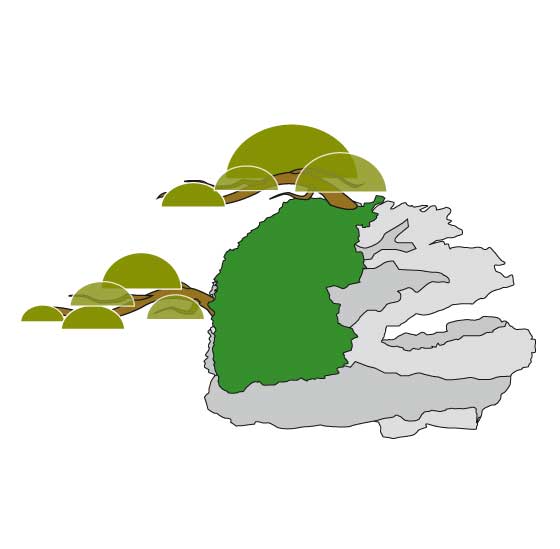
Rock-clinging style - A planting where the tree grows on a rock, or the roots cling in a small rock crevice where there is a little soil.
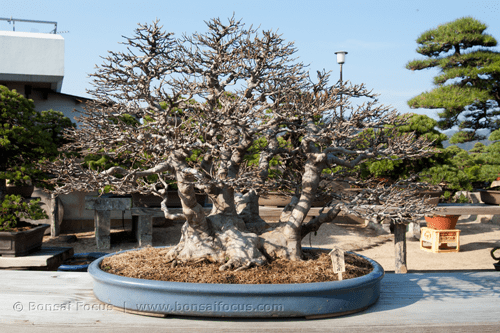
Kabudachi

Clump style - This is basically the same as the double-trunk style (Sokan). However, we only refer to a multi-trunk style if three or more trunks are growing out of the ground from a single root base. These trunks cannot be separate, unlike a group cultivation (Yose-Ue).

Netsuranari

Sinuous-root style - Resembling the Yose-Ue style, but all the trunks are connected by a single root system. It consists of a primary tree with multiple stems, each of which has emerged from various points of the sprawling roots and grown into a tree.

Han-kengai

Half-cascade style - In nature, this tree grows on a rock face and, because of snow and wind, it first grows downwards and then upwards again. In Kengai the leaves grow lower than the pot. In Han-Kengai they don’t.

Shohin
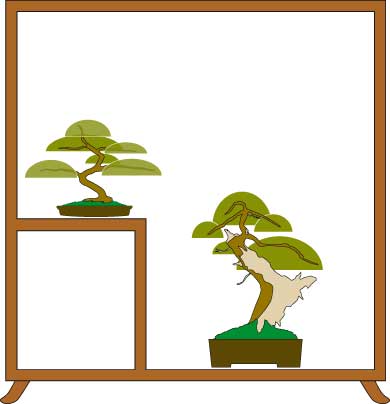
Miniature trees - Bonsai are classified in sizes. The most commonly known are Mame (5–15 cm / 2–6 inch), Shohin (13–20 cm / 5–8 inch), Chiu (41–91 cm /16–36 inch) and Dai (76–122 cm / 30–48 inch). Shohin bonsai are often displayed on special tables. This makes it not so much a style, more a way of displaying.

Shakan

Slanting style - In nature, a tree can lean to one side when there is a prevailing wind direction, or when a tree is standing in the shade and growing towards the light. In the slanting style, the trunk bends along its entire length to the left or to the right. The trunk can be both straight and curved. Very strong roots grow in the direction of the inclined trunk. In this way, the roots under the inclined trunk are pressed into the ground. This gives the impression that the bonsai is firmly anchored in its pot.
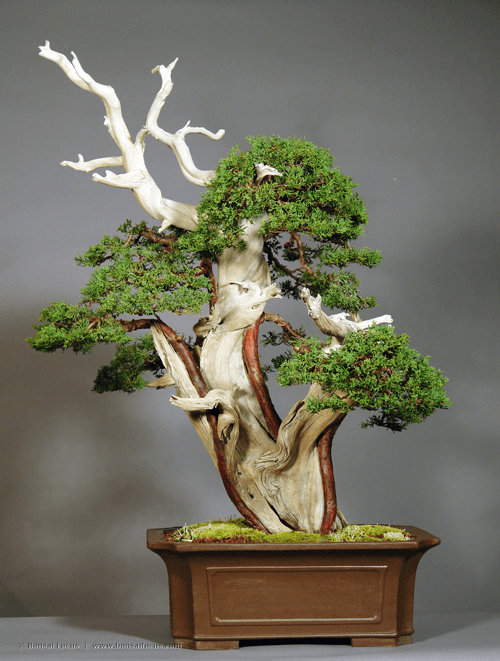
Tanuki

Artificial driftwood style - Tanuki is not so much a style, more a technique for making bonsai look older than they are. A live plant is joined to a piece of driftwood. Sharimiki is the original style.
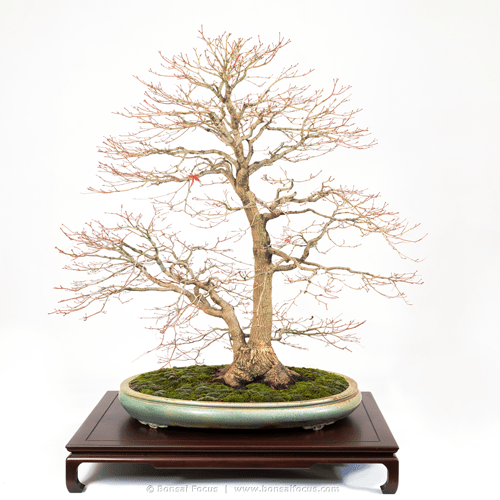
Sokan

Double-trunk style -
A double trunk occurs if a tree develops two trunks out of a single root base. The junction of the trunks at the base must be sharply “V”-shaped and not “U”-shaped. One of the trunks dominates because of its length or thickness. The smaller tree must be no more than two thirds the height of the larger. Together they form a common crown, just as we see in nature.

Fukinagashi

Windswept style - You should imagine this as a tree through which wind is blowing at that very moment. The main branches stay in position; only the thin branches and leaves position themselves according to the direction of the wind.

Gokan
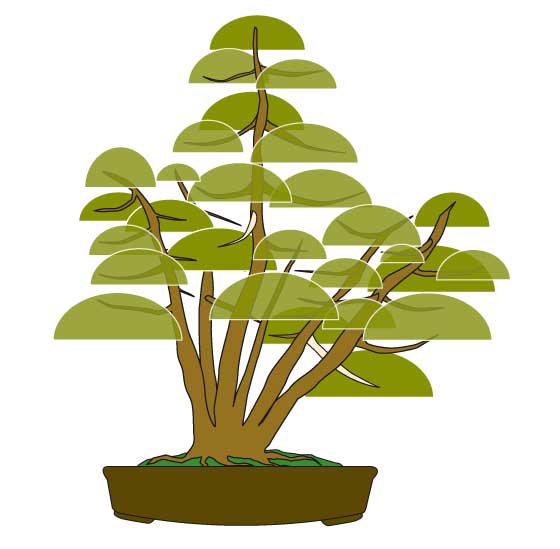
Five/seven-trunk style - This has a multitude of trunks, usually of an odd number. Gokan (five trunks) and Nanakan (seven trunks) refer to those bonsai with distinct, countable trunks, each of which has a stronger presence than the trunks of a Kabudachi.

 USA
USA 




